Welcome to Kiplinger's live updates on Medicare open enrollment. We'll provide you with all the up-to-date news, rules, tips, developments, and analysis you need to maneuver the ins and outs of Medicare open enrollment successfully.
The Annual Enrollment Period (AEP), which runs from Wednesday, October 15, through Sunday, December 7, is the biggest open enrollment period of the year. It allows both original Medicare and Medicare Advantage beneficiaries to review and change their coverage.
Stay with our retirement team (writers Donna LeValley, Donna Fuscaldo) for final days of open enrollment, giving you all the information you need to make the best choices as the the Medicare open enrollment period comes to a close on December 7.
Check our previous posts for expert tips and details on key changes to Medicare and Medicare Advantage plans.
Missed Medicare Open Enrollment? Here Are Your Options

If you missed Medicare open enrollment, you may still be able to change your Medicare selections, depending on your current coverage and why you fumbled the deadline. Your ability to make any changes after the December 7 deadline depends on whether you currently have original Medicare or Medicare Advantage and if there are extenuating circumstances that caused you to miss the cutoff.
Don't worry about seeing a doctor or filling a prescription — your Medicare coverage will continue uninterrupted despite missing the deadline. Your current insurance elections will be renewed automatically, and there will be no gaps in your coverage.
There are only limited opportunities for original Medicare beneficiaries to make coverage changes after that period ends. It will typically depend on circumstances and whether you qualify for the Special Enrollment Period (SEP). Medicare Advantage beneficiaries who want to make changes are in a better position and have a second chance to review and alter their selections in 2026.
If you qualify for the SEP, you can only change your Part D coverage. You are not able to switch from original Medicare to a Medicare Advantage plan during a SEP. The Medicare site offers a Q&A on how to qualify for the special enrollment period and gives more details about qualifying circumstances.
-Donna LeValley
12 FAQs About Medicare: Your Medicare Questions Answered

Medicare Open Enrollment ends this Sunday, December 7. If you are still deliberating, you still have a few days to choose a new Medicare Advantage or Part D drug plan, switch to a Medicare Advantage plan, or switch back to original Medicare. We have assembled some Medicare FAQs to help you make better choices during open enrollment.
What happens if you do nothing? Your coverage won’t be disrupted; your current selections will simply be renewed for 2026.
Original Medicare (Parts A and B): If you have original Medicare, you don't need to do anything to keep your coverage; it continues as long as you pay your Part B premiums (and Part A, if you have to pay a premium).
Medicare Advantage (Part C) or Part D Drug Plan: If you are enrolled in one of these private plans, it will usually automatically renew for the next year, assuming the plan is still being offered in your area.
If you're happy with the coverage you have now, and the plan is still being offered next year, you're all set. If you choose a new option for 2026, your new coverage will start on January 1.
-Donna LeValley
Medicare Premiums 2026: IRMAA Brackets and Surcharges for Parts B and D
A 5-Question Quiz to Help You Choose Between Original Medicare and Medicare Advantage
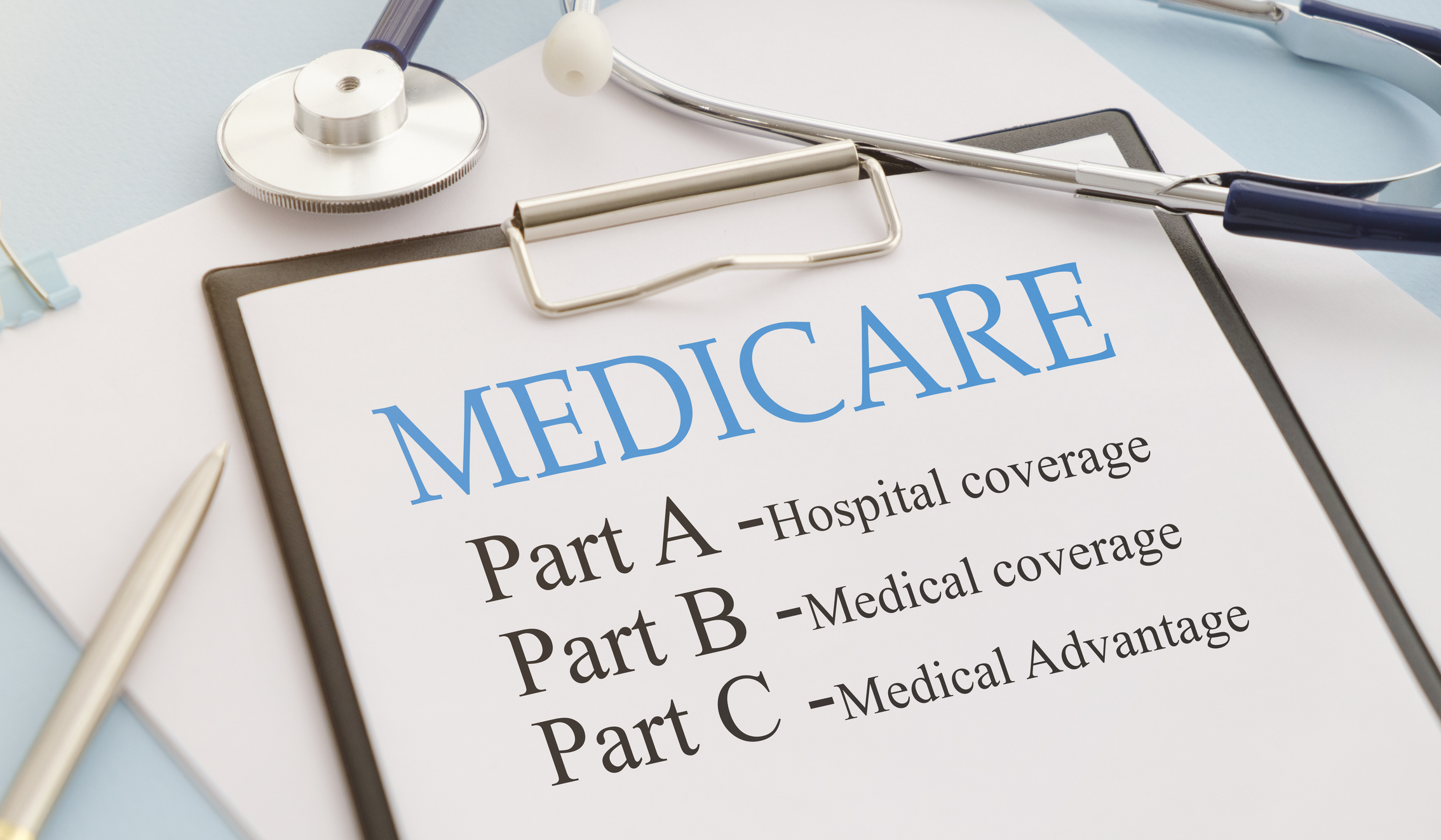
Are you a globetrotter who demands the freedom to see any doctor, anywhere? Or do you prefer the convenience of an all-in-one plan that includes dental, vision and a gym membership? Your retirement lifestyle and priorities — not just your health — should determine your Medicare choice.
The difference between original Medicare and Medicare Advantage impacts everything from your ability to travel without worrying about networks to the size of your monthly health care budget.
This quiz is designed to highlight your preferences for cost, flexibility and coverage, which are the main factors in choosing between original Medicare (Part A and B, plus a Medigap/Part D) and a Medicare Advantage (Part C) Plan. Answer five simple questions about your preferences for network flexibility, premium cost, and extra benefits to reveal the Medicare path that truly fits your retirement life.
-Donna LeValley
Medicare to Cover Obesity Drugs in 2026 for as Little as $50. What You Need to Know
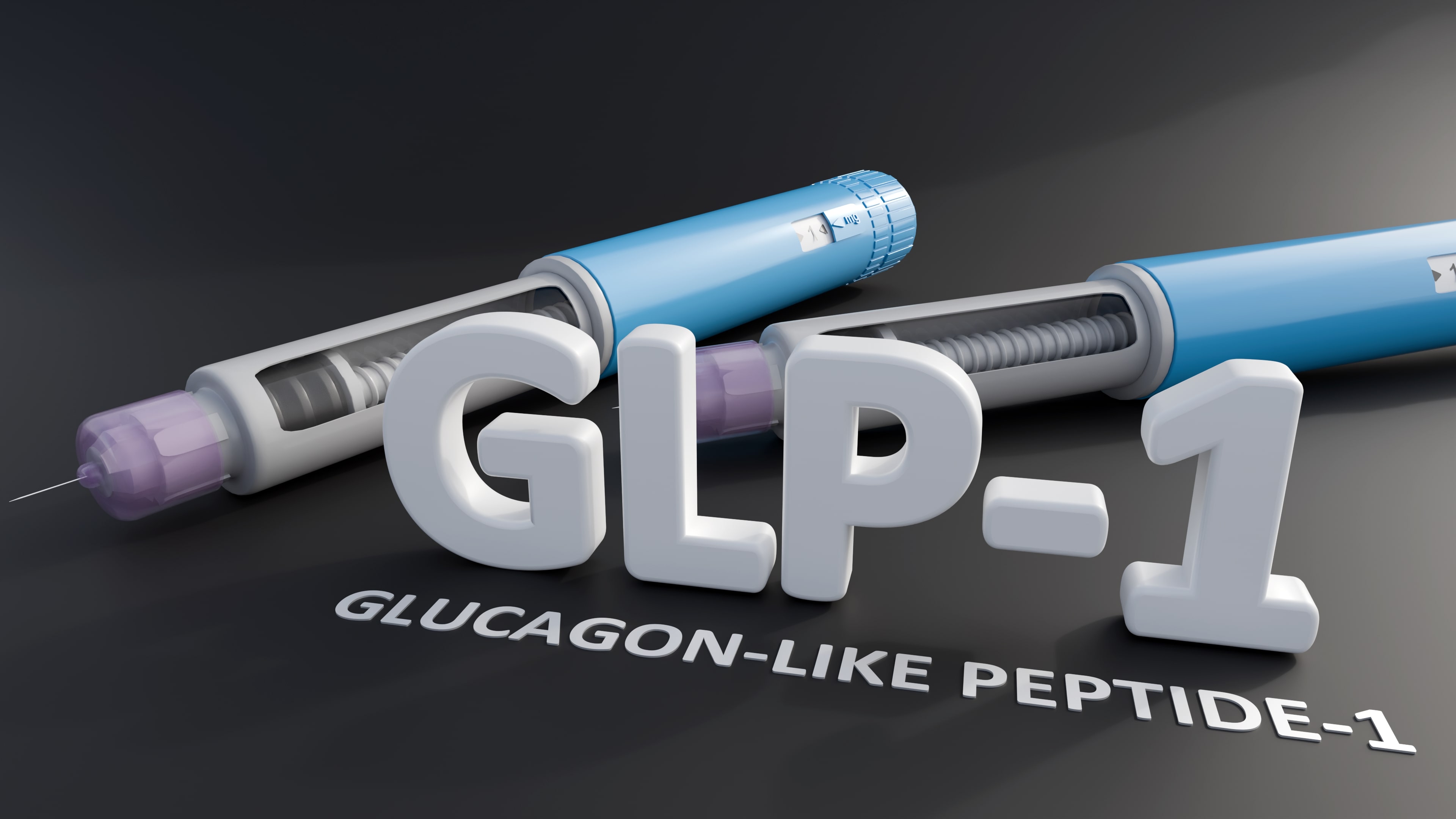
Medicare to Cover Obesity Drugs in 2026 for as Little as $50. What You Need to Know
Medicare beneficiaries who are struggling to manage their weight will have access to popular weight loss drugs through Medicare Part D drug plans next year. Wegovy, Mounjaro and Zepbound will be covered by Medicare.
Initially, the Trump administration decided not to cover GLP-1 weight loss medications prescribed only to treat weight loss in 2026. Cost was a big factor. Medicare currently covers drugs that are used for weight loss, like Mounjaro and Ozempic, but only when they are prescribed by doctors for other reasons, like managing diabetes.
After negotiations with many major drug companies, a deal was made to both lower the costs of GLP-1 medications and enable Medicare coverage of the weight-loss drugs beginning in 2026. Medicare will pay $245 per month, down from list prices ranging from $1,000 to $1,350. Beneficiaries will pay a maximum of a $50 copay. Ozempic, Wegovy, Mounjaro and Zepbound will be covered by Medicare.
- Donna Levalley
Get Free, Unbiased Help Navigating the Final Days of Medicare Open Enrollment

You'll encounter many people offering Medicare advice during this time — from insurance agents to plan representatives. While these individuals can provide valuable information about their specific plans, their primary role is often to sell or promote those plans. This isn't inherently bad, but it means their advice might not cover the full spectrum of all available options or objectively compare them against each other. Where can you get help? I recommend contacting your local SHIP (State Health Insurance Assistance Program.)
The State Health Insurance Assistance Program (SHIP) is a national program funded by the federal government, specifically designed to provide free, unbiased Medicare counseling to beneficiaries and their families. SHIP counselors are trained volunteers and staff, often seniors themselves, who are deeply knowledgeable about Medicare. They do not sell insurance, and their services are completely confidential.
What can SHIP do for you?
- Explain Medicare basics: What's the difference between original Medicare and Medicare Advantage? How do Parts A, B, C, and D work?
- Compare plans: Help you understand and compare Medicare Advantage plans, Medicare Part D prescription drug plans, and Medigap (Medicare Supplement) policies.
- Review your current plan: Help you understand your Annual Notice of Change (ANOC) and evaluate if your current plan is still the best fit for 2026.
- Analyze prescription drug costs: Input your specific medications into the Medicare Plan Finder to find the most cost-effective Part D plan.
How to find your local SHIP: The easiest way to connect with your local SHIP office is through their national website: www.shiphelp.org. Just enter your zip code or select your state, and you'll get their contact information. You can also call 1-877-839-2675 to get connected to your local SHIP.
Call Medicare directly: The official Medicare helpline, 1-800-MEDICARE (1-800-633-4227), is available 24 hours a day, 7 days a week. While they can't recommend specific plans, they can provide general Medicare information and help you navigate the official Medicare Plan Finder tool.
-Donna LeValley
Prior Authorization Coming to Traditional Medicare Starting in 2026
Time is Running Out! Your Last Chance to Make Medicare Changes is Ending Soon
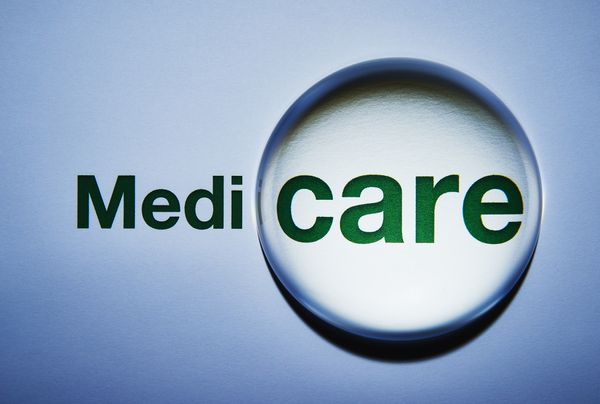
The clock is ticking! Medicare Open Enrollment ends on December 7th. If you've been putting off reviewing your Medicare coverage for the upcoming year, now is the time to act. Don't risk starting the new year with a plan that doesn't fit your health or budget needs.
The changes you make during this period — from switching between original Medicare and Medicare Advantage, to enrolling in or changing a Part D prescription drug plan — will take effect on January 1, 2026. After the deadline, your options to change coverage are very limited.
Here is a three-step plan to help you make the most of these final few days.
Last-minute action plan: 1. Check your current plan's changes (The ANOC)
Every year, the costs, benefits and coverage of Medicare plans can change. Your plan should have sent you an Annual Notice of Change (ANOC). If you haven't reviewed it, do so now!
Pay attention to these vital aspects of your plan:
- Premiums and deductibles: Are your monthly costs and upfront deductibles increasing for 2026?
- Drug formulary: Has your plan removed any of your essential prescriptions from its list of covered drugs (the formulary), or moved them to a higher cost-sharing tier?
- Provider network: Are your preferred doctors, specialists, or hospitals still "in-network" for next year?
2. Review your personal health needs
Your health and financial situation may have changed in the last year. Does your current plan still make sense?
- New medications or conditions: Have you started taking new, expensive medications? Do you have a new chronic condition that requires seeing specialists more often? Your drug and provider network needs should be your top priority.
- Budget check: Do you anticipate incurring more medical expenses next year? Compare the total estimated out-of-pocket costs (premiums, deductibles, copays) of your current plan versus a new option. Sometimes, a plan with a slightly higher premium offers much lower out-of-pocket costs for the services you use most.
3. Use the official Medicare Plan Finder tool
The most efficient way to compare options in your area is the official Medicare Plan Finder tool at Medicare.gov. This tool allows you to plug in your current prescription medications, preferred pharmacies, and anticipated health care services to see which plans offer the best value for your specific needs.
-Donna LeValley
Related article:
We’ll Be Back for the Final Week of Open Enrollment
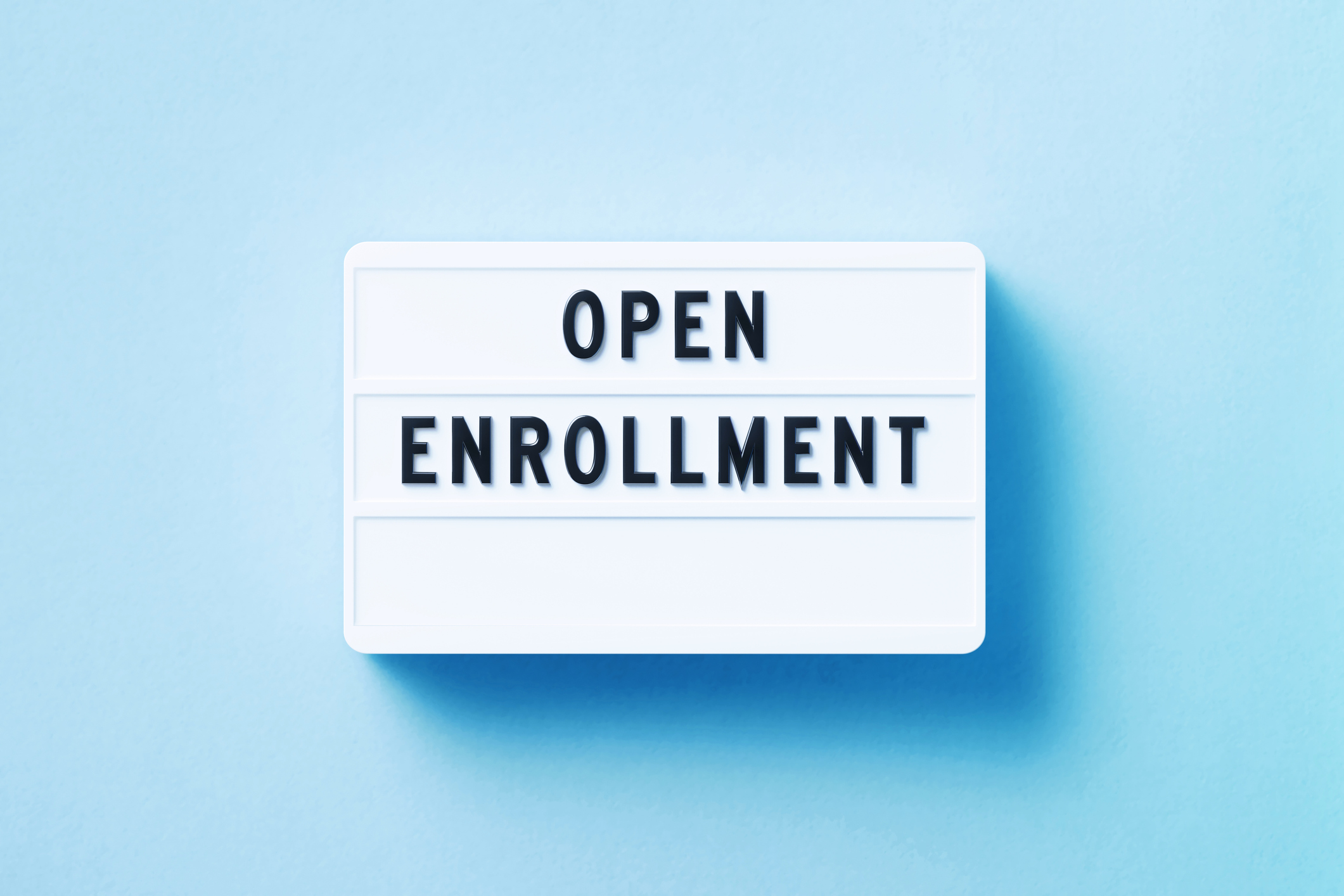
Whether you want to switch from original Medicare to an Advantage plan, from an Advantage plan back to original Medicare or simply find a cheaper Part D prescription plan, the Medicare Open Enrollment period is an annual opportunity you can't afford to miss. By taking the time now to review your coverage — especially checking if your prescriptions or doctors are still covered next year — you can potentially save hundreds or even thousands of dollars
So, do the research, compare your current plan with new offerings, and secure your choice by the December 7th deadline. We're signing off for now, but we’ll be back here on December 3 for the final week of Open Enrollment to share last-minute tips, answer common questions, and help you cross the finish line with confidence. Until then, use the tools and links provided to get started on your crucial Medicare checkup!
-Donna LeValley
Use Your HSA to Reimburse Yourself for Medicare Premiums and Expenses

The cost of health care expenses has been going up year after year and shows no signs of slowing down. Health care costs have increased by 188% from 2005 to 2025, according to the Millman Medical Index. An HSA can help you pay for those expenses in retirement.
While it's true that you can’t make new contributions to a health savings account once you enroll in Medicare, you can withdraw the money tax-free from the account to pay Medicare premiums, copayments and deductibles. However, you can contribute to your spouse’s HSA if you are enrolled in Medicare and no longer HSA-eligible.
So, if you’ve had an HSA for several years and didn’t realize you could withdraw money tax-free for Medicare premiums, you could reimburse yourself for all those premiums at any time. You just need to show receipts that you paid for eligible expenses. One caveat — you can’t withdraw money for expenses you incurred before you opened up the HSA.
-Donna LeValley
Appealing Your IRMAA

The IRMAA can sneak up on you if you aren't careful. It only takes earning $1 above the threshold to trigger the surcharge. In 2025, that $1 of income would cost you an additional $1,052.40 annually in Medicare surcharges, consisting of $888 for Part B and $164.40 for Part D. That's just the first tier; there are four more.
How do you know if you’re liable? If you’re subject to the surcharge, you will receive a notice from the Social Security Administration known as an initial determination. The good news is that you can appeal this determination if your circumstances have changed. After all, a lot can happen in two years, and if you can demonstrate to Social Security that a “life-changing event” has affected your income, it will reduce or waive your premium surcharges. The Social Security Administration considers the following to be life-changing events: marriage, divorce, the death of a spouse, loss of income, and an employer settlement payment.
-Donna LeValley
Steer Clear of Scams During Medicare Open Enrollment

Applying for and managing your Medicare benefits can be stressful, and scammers can take advantage of that vulnerability. They use times like Medicare Open Enrollment to prey on people’s emotions, and attempt to trick them into revealing important personal and financial information for identity theft. That’s why safeguarding your information during this period is crucial.
Some scammers claim they need information, such as your Medicare number, bank account, or credit card information, to send a “new” Medicare card or process a medical equipment claim, according to the Federal Trade Commission. Here is some information that will help you avoid those, or any other scam during Open Enrollment.
A representative from Medicare will never unexpectedly call, email, text, or message you on social media. No one from Medicare would ever contact you to ask for your Medicare, Social Security, or bank account numbers. A Medicare representative would never try to sell you anything or tell you that you need to pay for your Medicare card. And don’t be fooled by caller ID. If you are worried by what a caller says and want to double check something, hang up and call 1-800-MEDICARE (1-800-633-4227) to confirm everything is okay.
If you think someone tried to scam you, you can report the situation directly to Medicare through the 1-800 number or the Senior Medicare Patrol (SNP). The SNP can help you find state level resources to help you.
-Donna LeValley
Retirement in the Age of Cyber Scams: How to Protect Your Next Chapter
Think You Know Medicare Open Enrollment? Take Our Quiz

Timing is everything, and that is true of Medicare Open Enrollment. Missing a deadline can result in late enrollment penalties that last a lifetime or, at the very least, delays in coverage.
But don’t worry, we've got you covered. Take our quiz on Medicare enrollment deadlines, and if you get any answers wrong, brush up on the correct information we provide, and take it again!
Once you’re done, you’ll know off the top of your head the purpose of the Annual Enrollment Period (AEP), how long the enrollment period runs, and much more! You won’t ever have to worry about making any Medicare Open Enrollment mistakes.
-Donna Fuscaldo
One More Thing To Worry About During Open Enrollment: The Medigap Trap!

When it comes to navigating Medicare and Medicare Advantage, a bit of foresight can go a long way in avoiding the Medigap trap. The trap occurs when you enroll in a Medicare Advantage plan, intending to switch later to original Medicare with a supplemental Medigap plan, only to find you no longer have a guaranteed right to buy a Medigap policy. If you are approved for coverage, you may face higher premiums.
That’s because in most states, Medigap plans are automatically available only in the first six months after an enrollee becomes eligible for Medicare. After that, health screening may be required and the plans can refuse coverage or charge higher rates for those with health issues.
To prevent that from happening, consider your health and your family’s health history before selecting your plan. If you do select a Medicare Advantage plan, you can switch to original Medicare during the annual open enrollment period, which runs from October 15 to December 7.
-Donna Fuscaldo
Getting Closer to Learning the 2026 Medicare Premiums and Deductibles

The annual Medicare open enrollment period is underway, and I always thought it was a bit odd that it started before the new premiums and deductibles had been announced. Last year, the new numbers weren’t released until November. This year, the federal government shut down before the Bureau of Labor Statistics could release the September CPI report. Why does that matter? It’s an essential piece of information that the Social Security Administration (SSA) uses to calculate the 2026 COLA. The good news is that the September CPI, originally due for release on October 15, will now be released on October 24 at 8:30 am ET, the BLS announced. The COLA is expected to follow on the same day.
And, the COLA announcement always comes before the announcement of new Medicare premiums and deductibles.
Medicare Part B premiums are deducted directly from Social Security checks. Because of this, the Social Security Administration has a “hold harmless” provision that protects your Social Security benefit payment from decreasing due to an increase in your Medicare Part B premium. Medicare Part B premiums are projected to increase by $21.50 to $206.50 in 2026, a rise of 11.6% over the current 2025 premium of $185.00. The Social Security COLA is projected to rise between 2.7% and 2.8%, with a large part of that increase going to cover the Part B premium increase. Brass tax: The hold harmless provision is effectively a cap on the Medicare Part B increases.
The hold harmless provision does NOT protect you if:
- You are new to Medicare in 2026. Hold harmless does not apply to you because you have not been enrolled in Medicare Part B long enough to qualify.
- You are subject to IRMAA.
- You are enrolled in a Medicare Savings Program (MSP). However, the MSP should continue paying for your full Part B premium.
- You were enrolled in a Medicare Savings Program in 2025 but lost the program because your income increased or you failed to recertify.
-Donna LeValley
2026 Social Security COLA Announcement Is Back on Track Despite Government Shutdown
Answers to Frequently Asked Medicare Questions

The government categorizes Medicare as a mandatory program, which is funded by existing laws; therefore, it does not require an annual vote by Congress to continue operating. The upshot is that, under CMS, you will continue to receive Medicare benefits even during a shutdown. And that is why annual Medicare open enrollment is proceeding uninterrupted by the mandatory furloughs. But the combination of increased call volume during open enrollment and reduced staff can make it harder to get answers to pressing questions. That’s where we can help.
We’ve put together answers to 12 of the most frequently asked questions about Medicare, including when to sign up for benefits, why you might need Medigap insurance, how to manage costs, and how to appeal a Medicare denial. Hopefully, this list will provide you with the information you need without having to wait on hold.
-Donna LeValley
How to Coordinate Medicare and Employer Health Insurance

Turning 65 marks a significant milestone in health coverage, but for many still working, it also introduces a major decision: Should you enroll in Medicare right away, or keep your employer-sponsored health plan? This choice is far more complex than a simple either/or, as it involves navigating coordination of benefits, avoiding costly late enrollment penalties, and understanding the financial impact on tools like Health Savings Accounts (HSAs). Making the wrong decision could lead to unnecessary premium costs, gaps in coverage or steep and permanent penalties for delaying your enrollment in Medicare Part B or Part D.
We break down the essential rules for those with employer-provided health care coverage at age 65. We explain the critical "20-employee rule" that determines whether your employer plan or Medicare pays first and when you can safely delay Part B enrollment using a Special Enrollment Period (SEP). Understanding these guidelines is crucial for ensuring you maximize your current benefits and avoid costly mistakes when you eventually retire.
-Donna LeValley
Can You Sign Up for Medicare While Still on an Employer Health Plan?
How to Find the Best Plan in 2026
Searching for the right Medicare plan can feel overwhelming, but there are several excellent resources available to provide the free, unbiased help you need to make an informed decision. The most powerful digital tool at your disposal is the official Medicare Plan Finder at Medicare.gov/plan-compare. This online tool allows you to input your specific prescription drugs, dosages, and preferred pharmacies. The tool generates a personalized list of all available Medicare Advantage (Part C) and Part D Prescription Drug plans in your area, showing your estimated total yearly out-of-pocket costs (premiums, deductibles, and co-pays) for each plan. It's the essential first step to compare plans based on your unique health and financial needs.
For those who prefer one-on-one assistance or need deeper clarification, the most trusted resource is the State Health Insurance Assistance Program (SHIP). This is a national program, funded by the federal government, that offers free, confidential, and unbiased counseling to Medicare beneficiaries, their families, and caregivers. SHIP counselors are not insurance brokers, meaning they don't sell plans and aren't tied to any insurance company; their sole mission is to help you understand your coverage options, compare plans, and explore financial assistance programs like "Extra Help." You can find your local SHIP office and contact information by visiting shiphelp.org or by calling the national SHIP line at 1-877-839-2675.
Finally, you can always turn to 1-800-MEDICARE (1-800-633-4227), which operates 24 hours a day, 7 days a week (except some federal holidays). The representatives there can answer general questions about Medicare, walk you through the Plan Finder tool, and help you enroll in a plan. It's a great source for quick answers or assistance with the enrollment process itself.
-Donna LeValley
Medicare Coverage Of Telehealth Out Amid Government Shutdown

Medicare patients across the country are getting their telemedicine appointments canceled or rescheduled amid the federal government shutdown.
Among the casualties of the government’s inability to extend the budget beyond September 30th was a provision that allowed Medicare to cover the cost of telehealth services for the millions of Americans over the age of 65 or those with disabilities. As a result, doctors have been forced to cancel or postpone virtual visits, according to the Center for Medicare Advocacy.
This is leaving some beneficiaries without services and is particularly troublesome for people in rural areas who lack transportation or cannot visit a doctor in person because of their health.
While Medicare has offered telehealth coverage for years, it was limited until the pandemic. Now millions of Americans have come to rely on it for their health care needs. All of which is in limbo amid the government shutdown.
-Donna Fuscaldo
Medicare Open Enrollment Is Here!
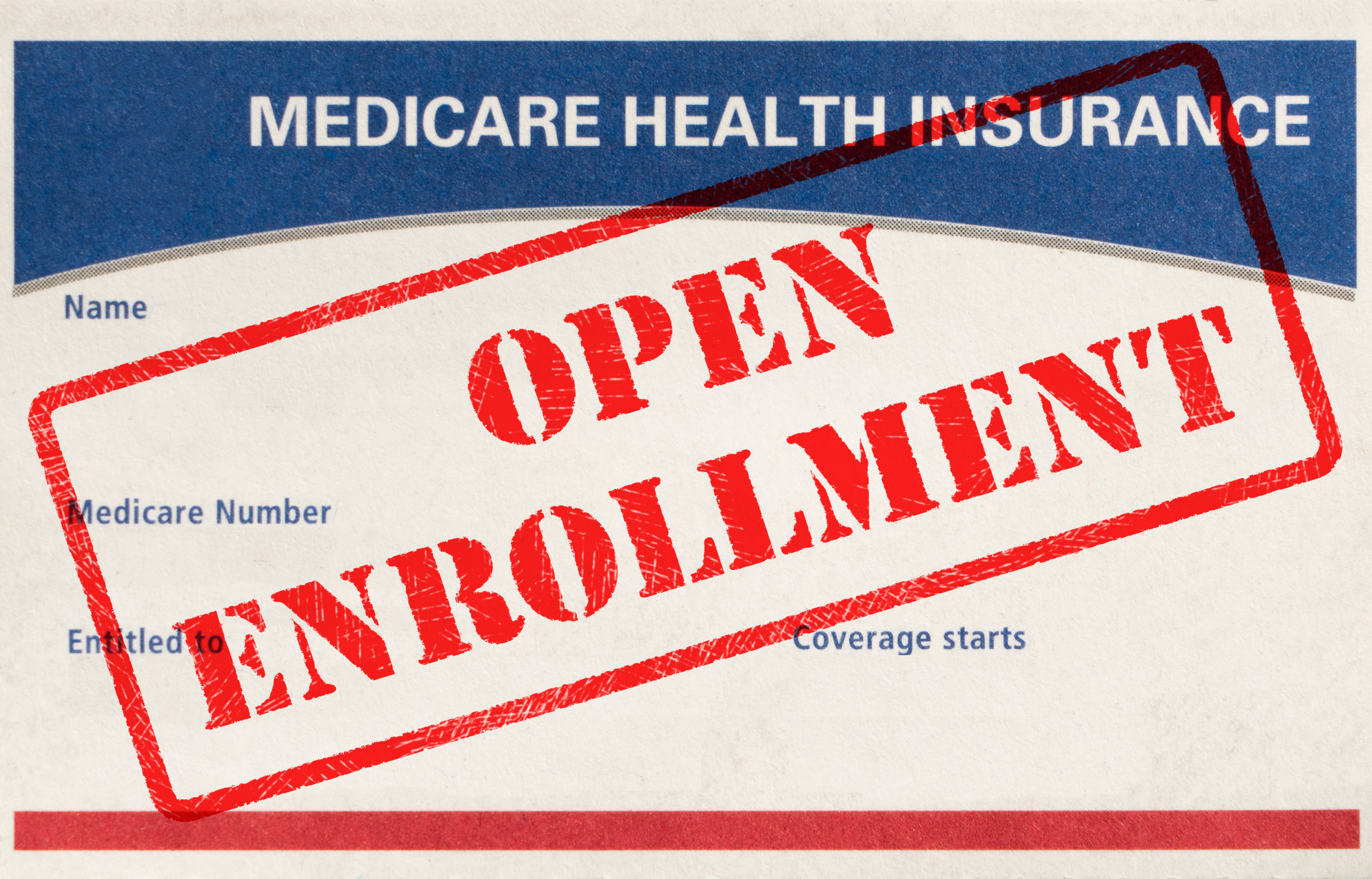
Medicare open enrollment begins this week, officially on October 15 and lasts through December 7. This is the period in which people with Medicare can change their health and prescription drug coverage.
Getting a handle on the basics of Medicare is crucial for protecting both your health and your retirement savings. Because of this, the choices you make during Medicare Open Enrollment are arguably some of the most important financial decisions of your life. That is why it's essential to know some key details about Medicare, including the open enrollment dates and the types of plans available to you.
There are ten key facts about Medicare that you should be well-versed in before selecting a new plan or sticking with your existing one. We lay them all out here.
-Donna Fuscaldo
Changes Coming to Medicare in 2026

It's never too early to start planning, and with the New Year just a mere ten weeks away, now is a good time to get a handle on changes coming to Medicare in 2026. And guess what, there are a lot of them. How many? Seven, according to our recent count.
They run the gamut from the big to the small and cover everything from your prescription drugs to how much you pay in premiums. For example, new in 2026, if you are on a Medicare Prescription Payment Plan (MPPP), you will be automatically enrolled each year thereafter. Or if you have a Medicare Part D plan, expect the deductible to increase. Knowledge is power, especially when Fidelity Investments estimates a person will spend $174,500 in out-of-pocket health care costs in retirement!
-Donna Fuscaldo
Prior Authorization Coming to Traditional Medicare Starting in 2026
How to Fight Rising Health Care Costs

The cost of health care is on the rise, with or without a deal in Congress, and that applies both to Medicare and out-of-pocket costs. Fidelity Investments’ 24th annual Retiree Health Care Cost Estimate pegs the cost at $174,500. That’s how much an individual aged 65, with Medicare, will spend in his or her lifetime on out-of-pocket health care expenses. That’s up 4% from $165,000 in 2024. Back in 2002, the first year Fidelity put out an annual estimate, it was a mere $80,000.
But that doesn’t mean you have to take it lying down. There are actions you can take to keep those expenses at bay. It all starts with thinking about the type of health care you want. Once you’ve figured that out, you can plan accordingly. Focusing on health and saving for long-term care helps too.
-Donna Fuscaldo
Five Smart Moves for Retirement Healthcare: From HSAs to Medigap Policies
Medicare Doesn’t Cover That?!?!

Medicare Part A and Part B, otherwise known as original Medicare, cover much of your health care costs in retirement, but not all of them. With Part A, you’ll get most of your inpatient hospital stays, skilled nursing facility stays, surgery, hospice care and even some home health care covered. Part B helps pay for doctors' visits, outpatient care, some preventive services, and some medical equipment and supplies.
Everything else — prescription drugs, annual exams, and a host of other things — will require additional coverage. To fill the gaps, retirees typically get extra coverage through a Medigap plan or a Medicare Advantage plan, which costs extra.
Wondering if you need that extra coverage? Check out what’s covered in original Medicare and what isn’t with our comprehensive guide.
-Donna Fuscaldo
Traveling with Medicare in 2026?

When you are reviewing your current coverage, think about where you plan to go in 2026 and if you want to look for a Medicare Advantage or Medigap plan with a travel benefit. After all, when an emergency happens, you can't put off medical care until you get home. You have to be treated where you are and sort out the expenses after the emergency subsides. But that doesn't mean you can't plan. Understanding what your Medicare insurance does and doesn't cover when you are away from home is the first step.
Ultimately, whether or not you can expect assistance from Medicare when you travel boils down to what type of Medicare policy you have and whether you are traveling domestically or internationally. Some Medicare Advantage plans include travel benefits for when you need care away from home, and several Medigap plans offer some coverage for foreign travel emergencies. Fortunately, beneficiaries of both original Medicare and Medicare Advantage plans have options to pick up some travel coverage.
-Donna LeValley
Medicare 101: The Four Parts of Medicare and What They Cover
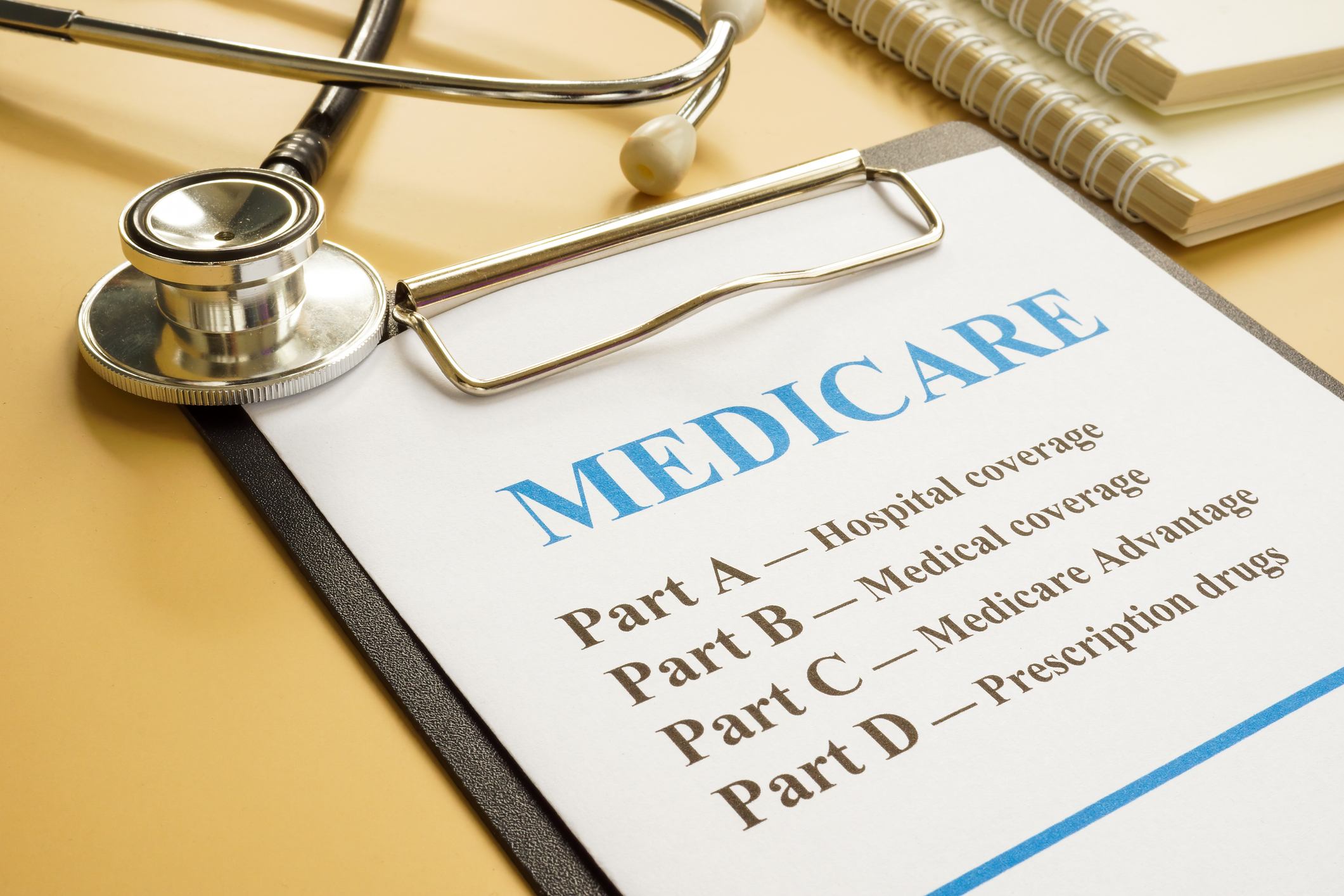
Understanding the different parts of Medicare is crucial because it directly impacts your health care coverage, costs, and choices. You can use this knowledge to select the combination of coverage that best fits your health needs, budget and preferred network of doctors and hospitals.
It's important to understand what benefits you will receive so you can decide if you need Part D prescription drug coverage, additional coverage through Medigap or a Medicare Advantage plan.
And, if you have a Medicare Advantage Plan, although your plan may have different rules than original Medicare, your plan must give you at least the same coverage as original Medicare.
In short, knowing how the different parts work empowers you to make informed decisions about your healthcare, ensures you have the coverage you need and enables you to manage your medical expenses effectively. So, here’s a quick guide to the different benefits provided through each part.
-Donna LeValley
Major Insurers Scale Back Medicare Advantage and Part D Plans for 2026

There is bad news for beneficiaries enrolled in certain Medicare Advantage and stand-alone Part D prescription drug plans. Three major insurers are significantly cutting their Medicare Advantage offerings for 2026, reducing both the number of plans and the areas they cover. Participants in these plans will need to select new coverage for 2026.
If you are enrolled in a Medicare Advantage plan or Part D drug plan through UnitedHealthcare, Humana, or Aetna (CVS Health) and want to know if your plan is being eliminated, read your Annual Notice of Change (ANOC).
There are resources available to help if you are among the MA plan participants who will need to find a new plan for 2026. You can use the Medicare.gov website that has a plan compare feature or contact your local SHIP (State Health Insurance Assistance Program) office for unbiased advice.
-Donna LeValley
Download the 2026 Edition of Medicare and You
The 2026 edition of the Medicare guide, Medicare and You, is out and available for download. And, it’s a resource I highly recommend. It has an easy to use index located in the front and the online version has hyperlinks to definitions of Medicare terms. Outbound links will lead you to more information on a topic or help you complete a task, such as how to update the address on your Medicare bill.
The guide provides clear side-by-side comparisons of original Medicare and Medicare Advantage plans that you can use to decide which plan is best suited to your needs. You can learn more about your rights under Medicare and how to file an appeal. The last section is devoted to resources, showing you where to get more personalized help and all the different ways you can contact Medicare.
After you’re done downloading the guide, stop by our site to take our quiz: Do You Know What Medicare Gives You for Free?, to test your knowledge of the services that Medicare provides at no cost to you.
-Donna LeValley
Review Changes to Your Coverage to Get Ready for Medicare Open Enrollment

One week from today, on October 15, Medicare Open Enrollment will begin. The annual enrollment period runs until December 7. It’s an important opportunity for all Medicare beneficiaries to review their current coverage and make any changes to plan selections. The first step is to review your Annual Notice of Change (ANOC). Whether you are enrolled in a Medicare Advantage plan or Part D prescription drug plan, you should have received this information by September 30. If you haven’t received your copy, call your plan or check their website.
The notice provides a detailed summary of all the changes to the plan's benefits, costs, and coverage for the upcoming calendar year. Without reading the ANOC, you could be surprised on January 1 by higher costs, a medication no longer being covered, or that your doctor or preferred facility is no longer in your network.
Whether you decide to stay with your current plan or to explore other Medicare coverage options, you want to make a choice based on the facts. If you have any questions about the upcoming changes, contact your plan’s customer service department. They can help you understand the details of the changes to your coverage.
-Donna LeValley
Don't Toss It! Why Your Medicare Annual Notice of Change Matters
